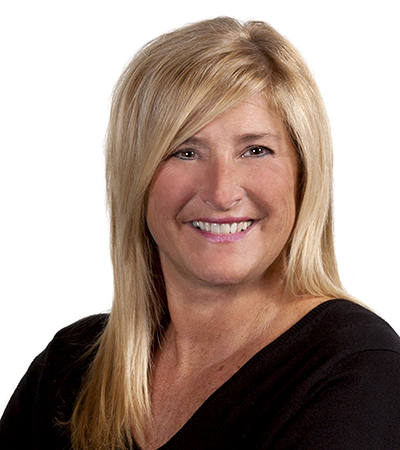YOUNGSTOWN, Ohio – Real estate agents in both the residential and commercial sectors say they are optimistic even as negative economic factors are starting to affect the market here and nationwide.
Consumers now are dealing with what Holly Ritchie, an agent with Keller Williams Chervenic Realty based in Canfield, calls “the P, R and E” – the pandemic, Russia and the economy.
“We’re in the midst of a shift,” she says. “When the economy takes a dip” – with prices going up on items ranging from gas to dairy products – “it shifts the market because people can afford less for homes.”

Another market shift she sees is a decline in the number of cash buyers.
“There was so much cash thrown around in the last year. I’ve never seen so much cash,” Ritchie says. “But now people are hanging on to their cash. I’m seeing more people who want to buy homes with loans, which is fine. That’s what we’re used to.”
The Mahoning Valley market over the past two years is the best that
David Klacik, part owner of Klacik Real Estate in Poland, says he’s seen in all his years as a real estate agent. There is interest in all price ranges, he says.
“The growth has been good,” he says. “We’re seeing a lot of new license plates coming in from different areas, and that’s good to see.
So far, the recent rise in mortgage rates isn’t having a big impact on the residential market, other than “small pockets,” according to Michael Stevens, co-owner of Coldwell Banker EvenBay Real Estate.
Stevens points to three listings during a recent week that quickly sold as examples of the current market.
“I don’t think we’ve had a [recent] listing without a minimum of almost half a dozen offers, all the way up to 12 or 15,” he says. “That happens more often than not.”
NOT ENOUGH INVENTORY
“I don’t have enough inventory out here,” Klacik says, echoing a common refrain among real estate brokers and agents.

When houses hit the market, he is selling them within 24 hours, typically getting anywhere from two to seven offers, and the sale price is exceeding the asking price.
During the winter, a house would have more than a dozen showings the first day it went on the market, with buyers often immediately wanting to know whether their offer would be accepted, Ritchie says. And that is continuing today. She points to a $160,000 house in Canfield she just listed that had 15 showings scheduled for one day.
EvenBay is seeing a “slight uptick” in activity with the normal seasonal increase in inventory, Stevens says.
Klacik attributes market activity in part to publicity surrounding economic development projects in Lordstown, including the Ultium cells plant and Lordstown Motors Corp.
“We’re loving that Foxconn made the deal with Lordstown,” he says. “That really put a feather in our cap and it’s increasing our gross when it comes to the number of buyers that we’re seeing right now. We’ve always been a hidden market.”
Industry experts are predicting a slowdown in the latter part of summer, which is when market activity normally slows, Ritchie says. She reports she already is seeing a slowdown because of the lack of inventory and rising interest rates.
“We used to sell 65% of the homes that we would sell in April, May, June and July. Why?” she says. “They want to close in August and they want to be in before school starts in September. That would be a normal market and I think that’s what we’re going back to.”
ABOVE ASKING PRICE
Offers are coming in up to $50,000 above asking for higher priced properties, EvenBay’s Stevens says. “But you’re not seeing that on a $100,000 house because it’s just totally different,” he adds.

Depending on amenities and condition, houses are going for “easily 10%” above asking price, Klacik says.
Properties are still selling above the asking price but not as much as before, Ritchie says.
Last year, she listed a condominium for $135,00 and it sold for $170,000. During a 30-day period that ended in mid-May, out of 10 houses in Canfield in the $200,000-$400,000 range, seven closed above asking price.
“That doesn’t mean that’s the market right now because these homes probably went under contract at the end of March, because it takes 30 to 45 days to close on a home,” she says. In the next 30 days, she predicts, half of all houses will sell for over asking price, and in the 30 days after that the figure will drop to 25%, she predicts.
With the lack of inventory, Ritchie often advises sellers not to delay putting their houses on the market, saying there is little they need to do to prepare their properties for sale.
“The longer you wait to put it on the market, the more you’ll have to do,” she says. Buyers aren’t as picky as they might normally be because of the scarce inventory.
“I have several buyers who have been living in rentals for a year because they can’t find something that they want,” Ritchie says, “If you can make any resale property work with changing the cosmetic, I tell everyone buy it because the longer you wait, the more it’s going to cost you.”
Meanwhile, rising interest rates might be “slowly impacting” the market, which “may be exactly what the market needs,” Stevens says.
“You may see it level off, but it’ll be a healthy level-off,” he says.
Klacik sees activity remaining high because interest rates are still at historic lows.
“It truly is a great time for individuals to take advantage of the rate,” he says.
COMMERCIAL MARKET
Activity hasn’t spiked in the commercial market as it has in residential but has been steady over the past few years.

There hasn’t been the same degree of scarcity in the local commercial market, says Lisa Resnick, commercial broker with Burgan Friedkin Commercial Group in Canfield.
When it comes to clients looking either to lease or purchase, “They’re still looking for space. They’re still out there,” she says.
Properties that generate income – such as leased office and retail buildings – are selling at asking price and slightly above, says Jim Grantz, broker associate with Edward J. Lewis Inc. in Youngstown. In the last few months, out-of-town buyers have come to town and go just above asking to make sure their contract is accepted.
“Prices continue to go up on investment real estate, as there’s less and less inventory,” he says. Strong activity in the industrial market will fuel new construction in that sector.
“I had somebody reach out to me about subletting space because they wanted to move to a bigger space, but they didn’t want to wait until their lease expired,” he says. “Within 30 days of putting it on the market, we got a national company that has expressed interest in taking over the lease and they’re comfortable with a sublease because they can’t find what they need in the marketplace right now.”
“The exciting news is office is bounding back,” Resnick says. “Really, retail, office industrial space, they’re all still pretty hot and still have people searching and looking. We probably don’t have as much industrial space as I would like to see, as I’m sure my clients would like to see various options, but there’s opportunity there.”
The Lordstown activity has helped spur local interest, including investments in multifamily and apartment complexes, she says.

Grantz doesn’t see any local phenomenon driving purchasing but acknowledges people are pulling money out of the stock market because they’re nervous about recent market trends.
“They want to put [their money] in assets that they can see, like real estate,” he says. “So, we’ve got a lot of dollars chasing too little inventory and everyone’s trying to do it before interest rates move up.”
The rise in office activity signals that the rise of the virtual workspace might not be as pronounced as some have anticipated. In the early 2000s, businesses offered the work-from-home option in an attempt to be more competitive, but employee retention suffered as a result, Resnick says.
“Office culture is and always will be extremely important when it comes to the retention of your employees,” she says. “Believe it or not, it’s the younger generation that likes that culture and wants the social aspect that an office environment creates.”
Resnick predicts that more employers are going to adopt the “flex desk” style of office that gives people the opportunity to work from home but also have them come into the office.
Grantz anticipates the rest of the year will remain strong.
How 2023 goes will have a lot to do with the results of the November midterm elections, he says, but declined to elaborate.
